What if we stopped treating the office like a productivity machine and instead designed a micro-city? A well-integrated ecosystem that supports how people actually move through their day.
It doesn’t take long for an isolated amenity to lose its shine, but a cohesive and community-building environment endures and strengthens over time. By borrowing principles from urban planning, we can encourage the connections and experiences that make in-person work meaningful.
Like your favorite walkable city, an office can have its version of the local coffee shop, the meditative park, the bustling plaza—spaces that respond to our human rhythms and create a sense of place. Vibrancy. With inspiration from the environments where people thrive outside the office, a forward-thinking company can organically nurture engagement. More than that, bringing these amenities indoors can elevate quality of life when the urban conveniences they mirror aren’t available in a workplace’s surrounding area.
The most effective workplaces support employees as people first. Let’s consider communal “third places” and a seamless integration of favored spots to focus, connect, eat, and recharge.
Connection: The Coffee Shop
Is your office coffee station just a coffee station, or is it working double-time as a social stimulus? Many coffee and hydration stations are convenient means to an end, which means they aren’t living up to their full potential. Convenience is actually working against you.
In a dense urban environment, there’s likely a coffee shop nearby. It’s cheaper and faster to brew a cup of joe at home, but popping into the coffee shop is more rewarding: You might run into someone, a spontaneous conversation might spark new ideas, familiar faces might make the neighborhood feel just a little more like home. To emulate these kinds of social rewards, companies should consider placing coffee and hydration stations in a central, high-traffic location. Employees may have to walk a little further to refill their mug, but the trip earns more than a drink.
This “functional inconvenience” sparks cross-departmental collaboration, encourages casual encounters, and helps break down silos.
Similarly, positioning an open-plan kitchen with communal tables and cozy nooks as a centralized gathering space will encourage an organic sense of community. Taking inspiration from a favorite café, for example, this space can turn lunch breaks into moments of connection and creativity. Introducing design elements like welcoming lighting and soft seating creates an environment where employees feel comfortable and open to engaging with colleagues.
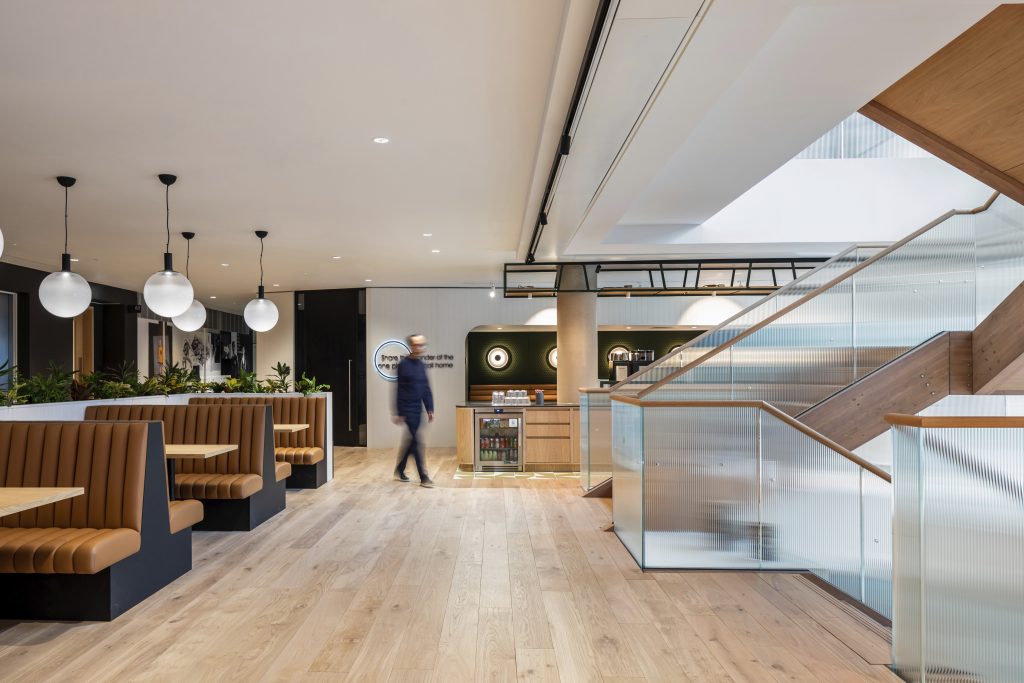
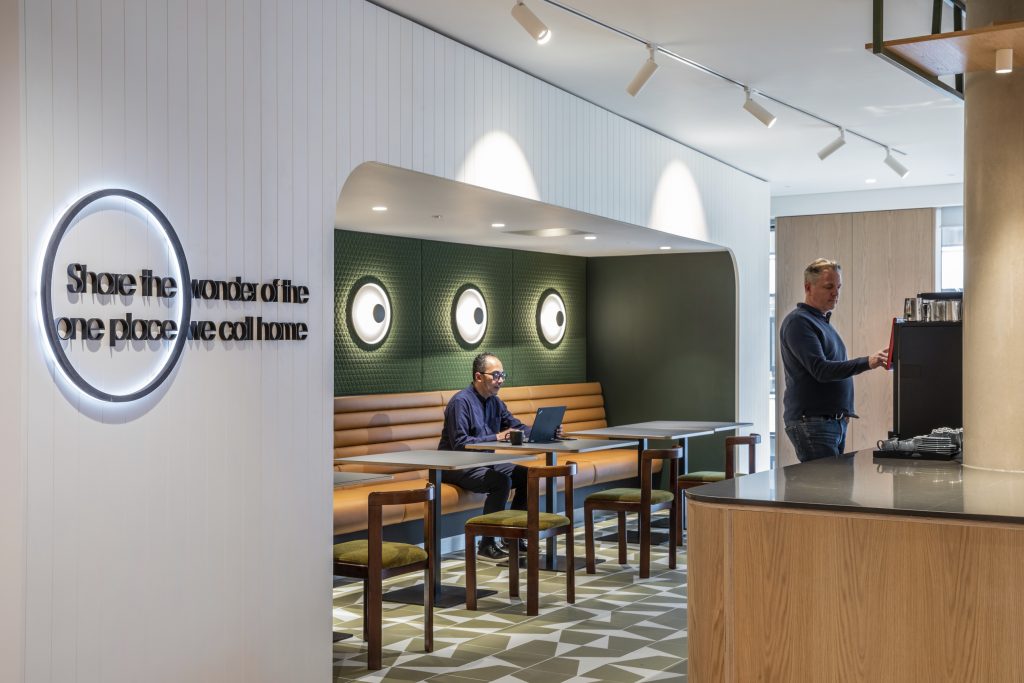
Focus: The Library
A public library means refuge without isolation. The opportunity to step away from chatter, street noise, and stimulation, and the opportunity to step right back into it. A dedicated workplace “library,” similarly, is a tool to support rather than alienate employees through high-stress, heads-down workload waves or moments of sensory overload. In light of many companies’ return to office, people emphasize social interaction as a workplace’s key strength; it’s important to remember an office should provide more than space to mix and mingle.
For a workplace “library” that balances solitude and social presence, designers will need acoustic panels and sound-absorbing materials that ensure a peaceful, distraction-free environment while allowing subtle background noise to seep in. Ergonomic seating options with adjustable heights and levels of support also help enhance comfort and productivity.
This kind of dedicated focus area also marks a step toward a more inclusive workspace, supporting employees across the neurodiversity spectrum with a place to retreat from overstimulation. Offering variety and choice is a foundational part of the Universal Design approach that helps employees bring their full selves to work.
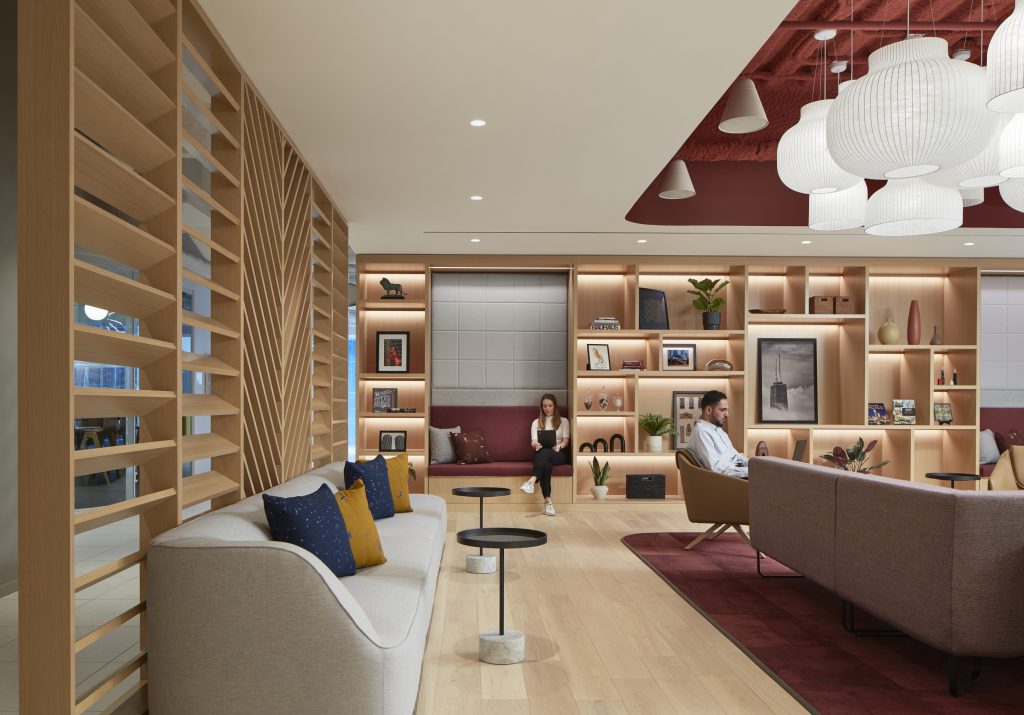
Movement and Engagement: The Sidewalk
A vibrant urban ecosystem isn’t all ‘destination.’ We don’t move from point A to point B in a void. Sidewalks and passageways are alive with spontaneous interaction, casual seating options, information sharing, public art, and dynamic entertainment. When we think of hallways in the workplace as static, passive connective tissue, we’re missing opportunities.
The office “sidewalk” should stimulate creativity and casual interaction. Workplace design can take inspiration from a city’s bench seating, leaning ledges, and installations by local artists. One strategy? Wider hallways, with seating along the way.
By turning a passageway into a welcoming space to linger, a widened hallway encourages people to pause for impromptu conversation.
Another strategy is turning a wall into a small art gallery, pulling inspiration from a museum’s ability to invite and inspire. Community boards help place-make, too, with opportunities to reflect company culture and support strong intraoffice communication.
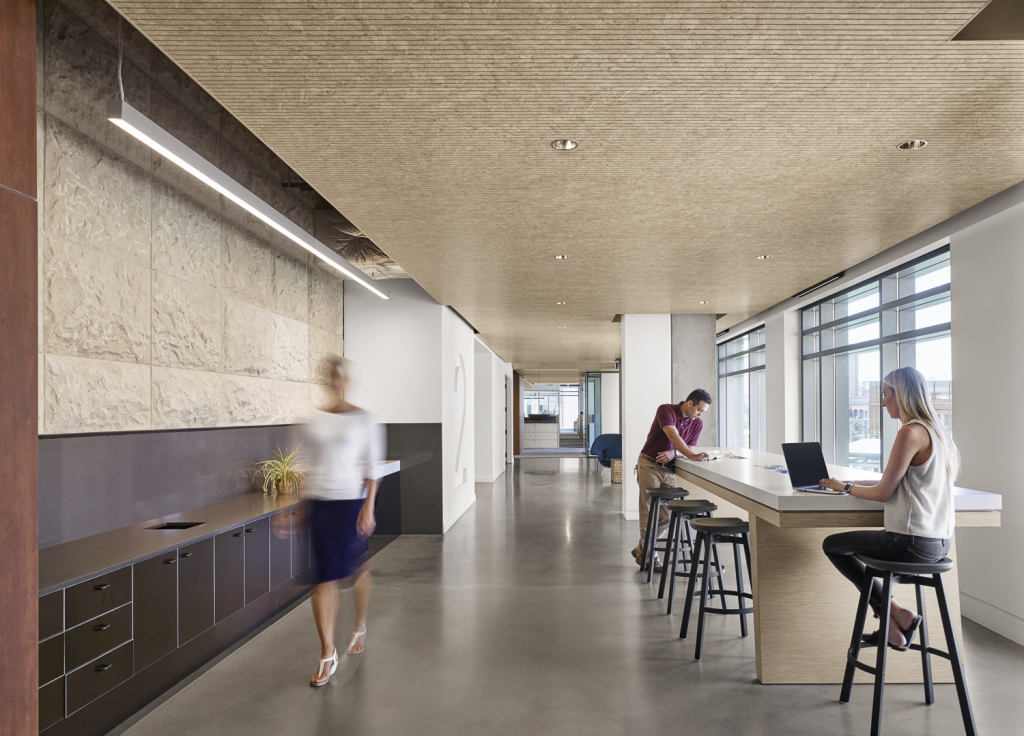
Relaxation: The Park
We know that nature, fresh air, natural light, natural materials, and even organic shapes contribute to a sense of well-being. We’re meant to spend time in the natural world. Parks make nature part of daily life in a city, and the same intentional incorporation of natural and nature-inspired elements pays dividends in the workplace.
This can look like lush greenery, indoor trees, water elements, ample daylight, large windows, and outdoor terraces. The workplace “park” can also take more direct inspiration from public parks, encouraging mindful breaks and combating mental fatigue with specific areas defined for relaxation, reflection, or connection in a soothing, laid-back setting with comfortable seating.
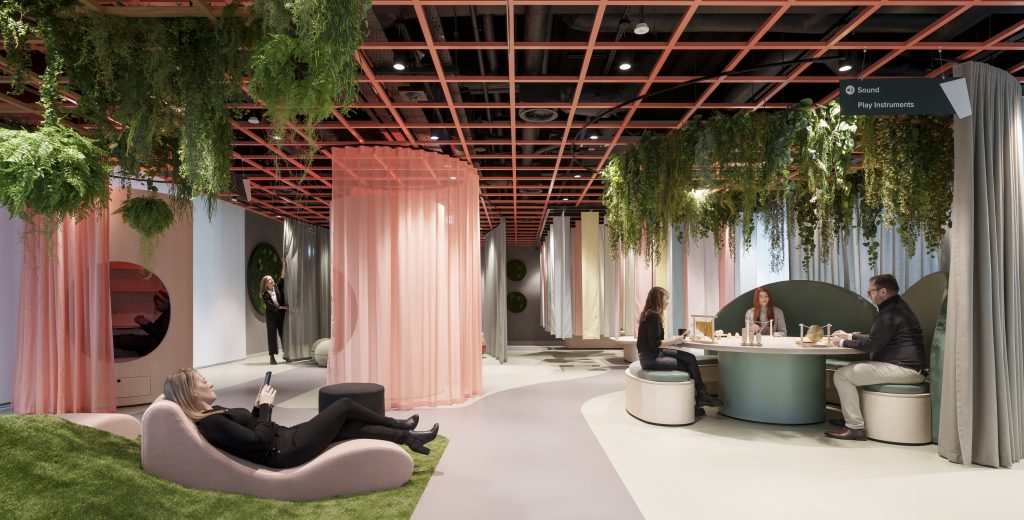
Celebration: The Plaza
Unpredictability in the market combined with rapidly changing technology and the ongoing return-to-office debate means flexibility is more important than ever in the workplace. Tomorrow will look different. We can still be prepared for it.
A multi-use office “plaza” is one solution. With flexible seating arrangements, a presentation area, and technology for hybrid events, the plaza makes space for town halls, company-wide meetings, and social gatherings. Instead of a space that needs to be reconfigured for each event, the office plaza can be designed as inherently multifunctional from the start. The easier it is to gather, the more often it will happen. This can be achieved with multi-zone layouts and integrated tech: screens, sound, and lighting that support both day-to-day casual use and formal presentations, without needing to be “set up.”
An adaptable plaza also allows an organization to welcome the community after work hours, hosting outside organizations and revitalizing the office as a valuable presence rather than idle space after 5pm.
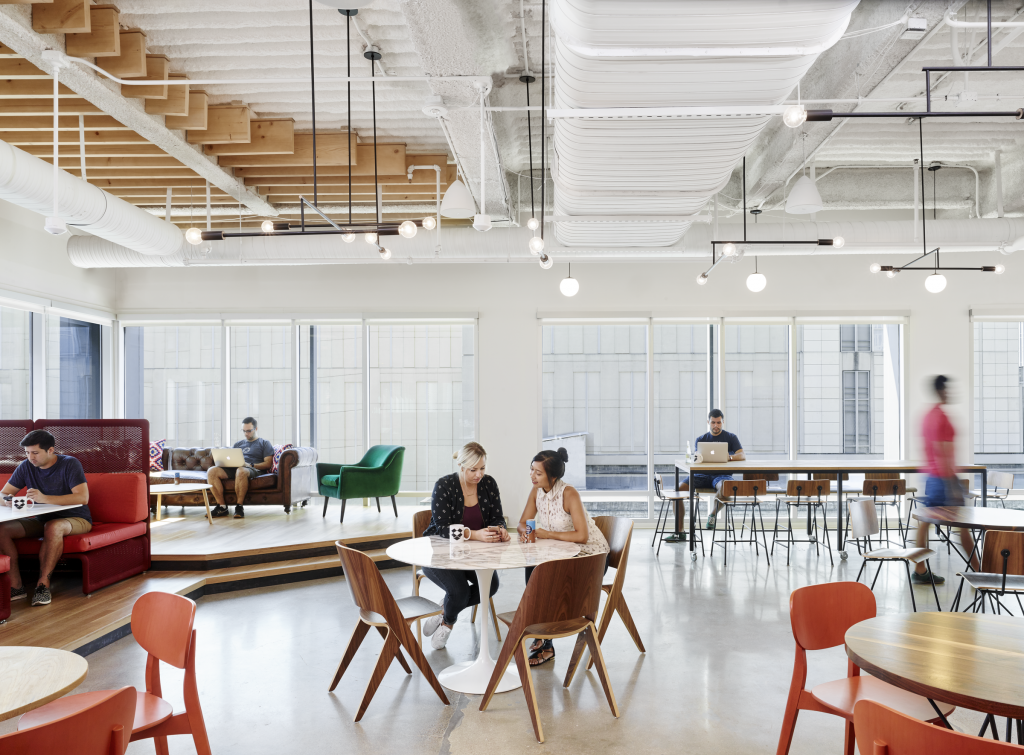
Problem Solving with the Urban Muse
There are plenty of additional space types that can be adapted from city to workplace micro-city: the neighborhood pub, a concert hall, a marketplace, a salon. Each city is unique, and each company’s culture and ambitions are unique. Think of the dial that needs to be turned up in your office—wellness, camaraderie, purpose, decompression—and the micro-city model might point you to a solution.
In a fragmented work world, with Gallup reporting a “Great Detachment,” the physical workplace is a powerful tool for supporting happiness and human connection. The principles behind where people like to live aren’t all that different from where they like to work. It’s not always possible to lease an office in an amenity-rich, walkable urban core, so let’s bring the framework indoors.

